12 Nights / 13 Days

This tour will give you very stunning and great pleasure, also this will have chance to see the cultures of Bhutan including western and central part of Bhutan. not only that this tour will brings many historical places and landscape. on top having chance of seeing and experiencing, many scared places will come across.International airfare (round trip)
Travel insurance
Single room supplement
other expenses such as drinks, laundry, telephone calls etc01-0130-12
Upon arrival in Paro, clear customs and immigration. Keep your copy of the visa clearance letter handy. Your visa has been paid. Meet your Guide and driver outside the terminal building and you will be taken to your Hotel. If your flight is in the morning you will be visiting touristic sight like Rinpung Dzong and National Museum (Ta Dzong) of Bhutan.
Rinpung Dzong: meaning “fortress of the heap of jewels”. Built in mid 17th century, it now serves as the administrative and judicial seat of Paro District and residence for the 200 monks of Paro. It is also the venue for Paro festival held in the spring. Several years ago, the colorful movie Little Buddha was filmed here.
National Museum: At the top of the hill above Paro Dzong is an old watchtower that was renovated in 1968 to house the National museum. It was completed in 1656 and was originally the Ta dzong (watchtower) of Paro Dzong.
Farm House: Bhutanese farmhouses are colorful, decorative and traditionally built without any nails. Majority of the houses are with three story, first floor is utilized for sheltering cattle, second floor for the family to live in and the top for storing and drying of foods and fodder for animal. Almost all the farmhouses follow the same architecture pattern. A visit to farmhouse is interesting and provides you with an experience to the daily life of average Bhutanese.
Paro: Paro is one of the most beautiful valleys in the country and Bhutan’s only airport is located here, it is located among the terraced fields, and elegant farm houses. Willow trees line many of the roads, contrasting with bright colors of the fields and the most popular and important sites also found within Paro District. Paro town (2,280m) is still a small city with one main street and less then two hundred small family-runned shops. Evening you can have free time to stroll around Paro town and dinner at the hotel. Overnight: Hotel
After breakfast drive to north of Paro town for hike to Taktsang Monastery (Tiger’s Nest) Taktsang Monastery is located on the face of a 900m seemingly impossible sheer, vertical cliff, above Paro Valley and hike is about 3 hrs and if clients are fit enough they might take less than 3 hrs that depends the people how fast they are. The trail begins near the Satsam (2.650m) and climbs steeply uphill to the Cafeteria (2.940m), an area of exposed ridge with panoramic view of Taktsang Monastery. This takes little more then an hour. (Ponies are provided on request to ride up till this Cafeteria, but rest of way, including return downhill must be done on foot.) You can get a good view from the Cafeteria or hike further uphill for at least another hour to get to the temple itself. Within the vicinity there are several other temples and sites to be seen. Lunch is served at the tea house on the way back from the Taktsang Monastry or if you have time you can go to town for lunch. After your hike to the Monastery you will drive to visit Drukgyel Dzong (Victory fortress), and if the weather permits you will see our secret and second highest Mountain of Bhutan before or from Drukgyel on the way back you will also visit Kyichu Lhakhang.
Taktsang Monastery :( Tiger nest). Taktsang is the most famous of Bhutan’s monasteries, miraculously perched on the side of a sheer cliff 900m above the Paro valley. It is said that Guru Rinpoche flew to the site of the monastery on the back of a tigress, a manifestation of his consort Yeshe Tsogyal, to subdue the local demon, Singye Samdrup. He then meditated in a cave here for three months. The site has long been recognized as a Ney, or holy place and it is one of the most secret pilgrimages in the Buddhist world not only Bhutan.
Drukgyel Dzong: This Dzong was built in 1649 by Zhabdrun Ngwang Namgyel in a location chosen for its control of the route to Tibet. This dzong was named ‘Druk’ (Bhutan) ‘Gyel’ (victory) to commemorate the victory of Bhutan over Tibetan invaders in 1644. This is said to have worked successfully during the second attack by Tibetan invaders in 1648.
Kyichu Lhakhang: Tibetan King Songtsen Gompo in the 7th century miraculously builts 108 temples, along with Jorkhang in Lhasa. Kyichu is considered to be one of them and is one of the oldest temples in Bhutan.
After this exciting experience you will be going back to the Hotel where your dinner will be served and you can enjoy your free time and relax. Overnight: Hotel/Resort Paro
After breakfast drive to Thimphu the modern capital of Bhutan and the distance is about 53 km from Paro town and takes 1 hour. Drive south following Pachu River to the river confluence at Chuzom. On the way you will see Bhutan’s rural area and there will be a possibility to make picture of this beautiful landscape. Your lunch will be served one of the restaurants at Thimphu town or in the hotel and after lunch you will be visiting some of the important touristic sight in Thimphu places like Folk Heritage Museum, Memorial Chorten and Takin Sanctuary. Evening you can have free time to walk around Thimphu town and dinner at the hotel.
Thimphu: (at 2400m) is Bhutan’s capital city and center of government, religion and commerce. About one hour drive east from Paro this unique city with its unusual mixture of modern development alongside ancient traditions will warmly welcome you. Home to civil servants, expatriates and monks, Thimphu maintains a strong national character in its architectural style. It was a wooded farming valley until 1961, when it became Bhutan’s official national capital. The massive Tashicho Dzong, about 700 years old, was carefully revamped in the 1960s by the third King Jigme Dorji Wangchuck to house the Royal and main government offices. Even today, the city has a few streets and the population is more than 75.000 people
Folk Heritage Museum: The museum is a restored three-storey, traditional rammed-mud and timber house, which dates back to the mid 19th century. The house design and many of the implements are also reminders of how many rural Bhutanese still live today. Every visit to the museum is a unique experience because the activities of the museum follows the seasonal dynamics in the same pattern as the management of a rural household is influenced by the seasonal rhythms
Memorial Chorten: This landmark of Thimphu was built in 1974 in the memory of third King, Jigme Dorji Wangchuck, who is popularly regarded as Father of Modern Bhutan. It is a four-story tall white building, containing statues and iconography of deities from complex tantric teachings and serves as an important place of worship for Thimphu residents, as well as from other parts of the country.
Takin Sanctuary: Takin (Budorcas taxi color) has been chosen as the national animal of Bhutan is based both on its uniqueness and its association with country’s history and mythology. It is said that Devine Madman, a popular saint is said to have created it with his magical power at a large congregation of devotees. It resembles like a cow from back and goat in the front and continues to befuddle taxonomists, who cannot quite relate to other animal. Overnight: Hotel/Resort Thimphu
Day Four: Thimphu Sightseeing (2,400m/7,875ft)
After breakfast sightseeing in and around Thimphu and you will cover the most important touristic sites again as mentioned below and if you are in the weekend in Thimphu you can visit Saturday and Sunday market. After lunch free time to stroll around Thimphu town for your own or accompany with your guide and dinner at the hotel. Overnight: Hotel/Resort Thimphu
Tashichhodzong: This fortress serves as the office of the King, ministers and various government organizations. It also is the headquarters for central monastic body of Bhutan. Bhutan’s spiritual leader Je-khenpo and the monks of both Thimphu and Punakha reside here during summer. It is also the venue for Thimphu Festival in the fall season.
Changangkha Monastery: It is one of the oldest monasteries in Thimphu. It was built in 15th century by phajodrugom shingpo, who came from Tibet and brought Drukpa kaugye and spread his teaching. Inside the monasteries the main figure is (Avolokiteshwara) god of compassion and other deities.
School of arts & Crafts: (Open 9-5pm Mon- Fri and 9-1pm on Sat-with exceptions of holidays and breaks). Commonly known as ‘the painting school’ is a national institute where children attend six-year course that provides instruction in Bhutan’s traditional arts and crafts called Zorig Chuksum –meaning 13 crafts.
Paper Factory: traditional papers were made from the daphne plant, using simple methods. National Library: It was established in 1967 to preserve many ancient Dzongkha and Tibetan texts, and is a lavishly decorated and vibrant example of Bhutanese architecture which contains Bhutan’s history in the form of religious and historical literature.
Weekend Market: Every Saturday and Sunday most of the Thimphu population congregate on the banks of the river where the weekend market is held. Here villagers from the valley and other nearby places come to sell their agriculture produce. It’s an interesting place to visit, where people jostle with well-heeled Thimphu residents for the best and cheapest vegetables and foodstuffs
After breakfast drive to Punakha for 3 hrs about 75 km en-route visit Dochula pass (3,050m), where you have the opportunity to see the peaks of the eastern Himalaya ranges if the weather permits. Descend to Punakha from Dochula takes about 2 hours and lunch will be at a local restaurant or in the Hotel in Punakha. After lunch you can visit Punakha Dzong and it is one of the most beautiful Dzongs in Bhutan.
In the evening you will have your dinner in the hotel and have free time to stroll around in Punakha.
Punakha dzong: Or Pungthang Dechen Phodrang “Palace of Great Happiness” is located on the confluence of two rivers, the Pho and Mochu. It was built in 1637 by Zhabdrung Nawang Namgyal and following the ancient traditions, it serves as winter residence for chief abbot (Je-khenpo) and the monks of Central Monastic Body, who return to Thimphu in the summer.Overnight: Hotel/Resort Punakha/Wangdi
After breakfast drive to the idyllic countryside north of Punakha to the village of Nezigang, starting point for our gradual hiking ascent through cultivated fields and little hamlets to the Khamsum Yulley Namgay Chorten hike uphill takes about ½ hour. After hike to the Monastery you will also visit Chime Lhakhang for ½ hour walk from the road through the cultivated field. If time permits you can drive to Wangdi to Visit Wangdi Phodrang and town of Wangdi.Evening you can have free time to walk around Punakha and dinner at the hotel.Khamsum Yulley Namgyel a shrine built by royal family on the perched high on a hill on the opposite bank of the river the 30m tall Chorten, which took eight years to build, this chorten is a splendid example of fine Bhutanese architecture and art and is the only of its kind in the world. It has been build over eight and a half years and its details have been drawn from religious scriptures. This shrine is an amazing elaborates structures with a rainbow of Guru Rinpoche and super views of the Punakha valley.
Chimi Lhakhang: fertility temple/ monastery dedicated to Lama Drukpa Kuenley, a Tibetan Buddhist saint known popularly as “the divine madman” and considered a folk hero in Bhutan for his unconventional ways. Drukpa Kuenley originally built a chorten on the site in the 14th century, on which a temple was later built in 15th century. The temple, flanked by nearly 100 tall prayer flags, sits atop a picturesque hill. It has long been a pilgrimage site for childless couples.
Wangdiphodrang Dzong: Zhubdrang Ngawang Namgyal in 1638 built this massive fortress sitting on a hilltop at the confluence of Punakha Chu and Tang Chu Rivers. It is built in the shape of sleeping bull. One legend has it that when Zhabdrung was in the process of building the fortress, he met young boy, wangdi on the river bank building his sand castle and it is said to have been named Wangdi’s Phodrang, meaning castle.
Punakha/Wangdi – Trongsa (2,200m/7,218ft
After breakfast you can visit Trongsa Dzong and Ta Dzong then drive to Jakar takes about 3 hrs cross Yotong La pass (3,440m) and descend into Chumey valley (2,700m), the first of four Bumthang valleys. From the Chumey valley it is another 45 minutes to Bumthang cross kiki la pass 2,860m and finally arrive at Bumthang. After you check in your room you can go for walk or have free time to relax by enjoying the cool breeze and beautiful scenery of the valley and dinner at the hotel.
Trongsa Dzong: or Choekhor Rabdentse is the largest and most impressively situated dzong in Bhutan, perched high on a cliff above the deep Mangde Chu river gorge. It was built in 1648 on the site of temple which was built in 1543. The huge many-level fortress with its intricate wood carvings has a maze of courtyards and covered passages that follow the contour of the ridge. First and second King ruled the country from this fort and all successive Kings have held the post of Trongsa Penlop, (honorary governor) prior to being crowned as the King.
Ta Dzong: The watchtower above the town area is shaped like tower with wings. It contains a shrine dedicated to khesar, the views from the tower of the Dzong and town is spectacular and in ancient times, all approaches could be monitored from here. At present this Ta Dzong (watchtower) was converted into museum.
After breakfast sightseeing around Bumthang valley and you will cover the most important touristic sites such as Kurjey lhakhang, Jambay Lhakhang, Tamshing temple and Jakar Dzong. This is the place where Guru Rimpoche first visited to Bhutan in 746 AD and blessed by Guru Rimpoche and many other great gurus.After your sightseeing you can have free time to stroll around the valley or relax and dinner at the hotel.Bumthang: is justifiably regarded as the cultural heartland of the Kingdom with its many temples, holy sites, languages and traditions. It is here that most Kings, rulers or priest were buried or cremated. There are four valleys and Jakar at 2,600m in Chokhor valley is the administrative and the main town of Bumthang district. Jambay Lhkahang: is another one of the geomantic temples (like Kichu in paro) founded in 7th century by a Tibetan King Songtsen Gompo, this time on the left knee of the Ogrees’, who was hindering the spread of Buddhism across Himalayas. Later in the 8th century, guru Rinpoche is said to have preached the local king Sindhu raja from the temple roof.Kurjey Lhakhang complex: is named after the sacred power place where Guru Rinpoche (8th centery) left the imprint of his body (kurjey) on the soild rocks, which can be seen from inside the shrine. There are three large temples within the complex surrounded by a perimeter comprising of 108 stupas. Upon entering, the first temple to the right is Guru Lhakhang (which houses the cave) dating from 1652. The middle temple Sampalungdrup was constructed under patronage of Her Majesty queen mother Ashi Kesang Wangchuck.
Tamshing Goempa: Located opposite Kurjey Lhakhang this temple was founded by Bhutan’s own religious treasure discover Terton pema Lingpa in 1501. Believed to be the reincarnation of Guru Rinpochey, he discovered many religious treasures around the country. The original murals on the walls still survive, which are considered to be the oldest extant painting in Bhutan
Jakar Dzong: “Jakar Dzong” literally meaning castle of the white bird is located on picturesque ridge overlooking the Chokhor valley. The current structure built in 1667 (refurbished in 1683) is said to be one of largest dzong in Bhutan, with impressive fortress walls, elegant structure but rather simple interior. Overnight: Hotel/Resort Bumthang
After breakfast heading back to Punakha from Jakar and it is about 210 km, 8 hrs drive crossing three passes Kikila pass, Yotongla pass and Pelela Pass en-route you will see again Chendebji stupa is similar to the one at Boudhnath in Nepal. On the way you will have pass by the beautiful rural area and landscape from Bhutan and you will have time to make some magnificent pictures of this unspoiled nature.
After long drive you can relax at the hotel and dinner at the hotel. Overnight: Hotel/Resort Wangdi/Punakha
After breakfast drive to Paro for 4 hrs en-route visit Simtokha Dzong one of the oldest Dzong in Bhutan and lunch in Thimphu. After lunch drive to Paro for overnight and dinner at the hotel. Overnight: Hotel/Resort Paro
Simtokha Dzong: It is about 5km south of Thimphu and it was built in 1629 by Zhabdrung Ngawang Namgyal and is one of the oldest dzong that has survived as a complete structure to incorporate both monastic and administrative facilities. At present, it is the home of the institute for language and cultural studies, the students are both monks and lay people. Overnight: Hotel Paro
After breakfast drive to Haa valley for day excursion and it is approximately 68 km from Paro about 2 ½ hours drive en- route you will come across Cheli La Pass (the highest motor road in Bhutan standing at an elevation of 3988 m). It is at this range that the national flower of Bhutan; the Blue Poppy blooms (can be seen in spring time in this area).During the clear skies it is worth taking the hiking trails that lead up the mountain ridges for about one and half hours to get a spectacular mountain views.The Haa valley has been opened for tourists only in 2001 and is a spectacular quiet place where you will encounter authentic Bhutan. It is a large fertile valley and the staple crops are wheat, potatoes, barley and millet. Also Yaks are raised here by the local farmers.
Drive to the Paro Airport to catch your flight. Our representative from Bhutan Travel Connection will escort to see you off at the airport
| No of pax | Age Limit | Price per pax (Rs) |
|---|---|---|
| Adult | Above 12 years | $ 250 / Adult |
Bhutan Rovers-Travel & Tour is a licensed private tour operator specializing in cultural, wildlife, trekking, festival trips, adventure & custom tours all over Bhutan. Our goal is to give travelers an in-depth experience of Bhutan's people, places, environment and philosophy. We measure our success in Bhutan with happiness. Our guests experience Bhutan in safety and comfort, creating memories lasting a lifetime. Bhutan Rovers-Travel & Tour never wants to be a leading travel company but just the best and effective in every facet. You might already have a plan to visit Bhutan before contacting us or you might be in planning stage. We can make you experience uniquely than that of other companies with best travel packages and bookings as we have a team of professionals & experience in tourism over years who can understand your needs and interests upon what you like to stopover in Bhutan. Our team insures your comfort and safety every kilometre along the way. Just Contact us and discuss your needs and interest, we will make your trip in Bhutan a trip of lifetime. Read More...
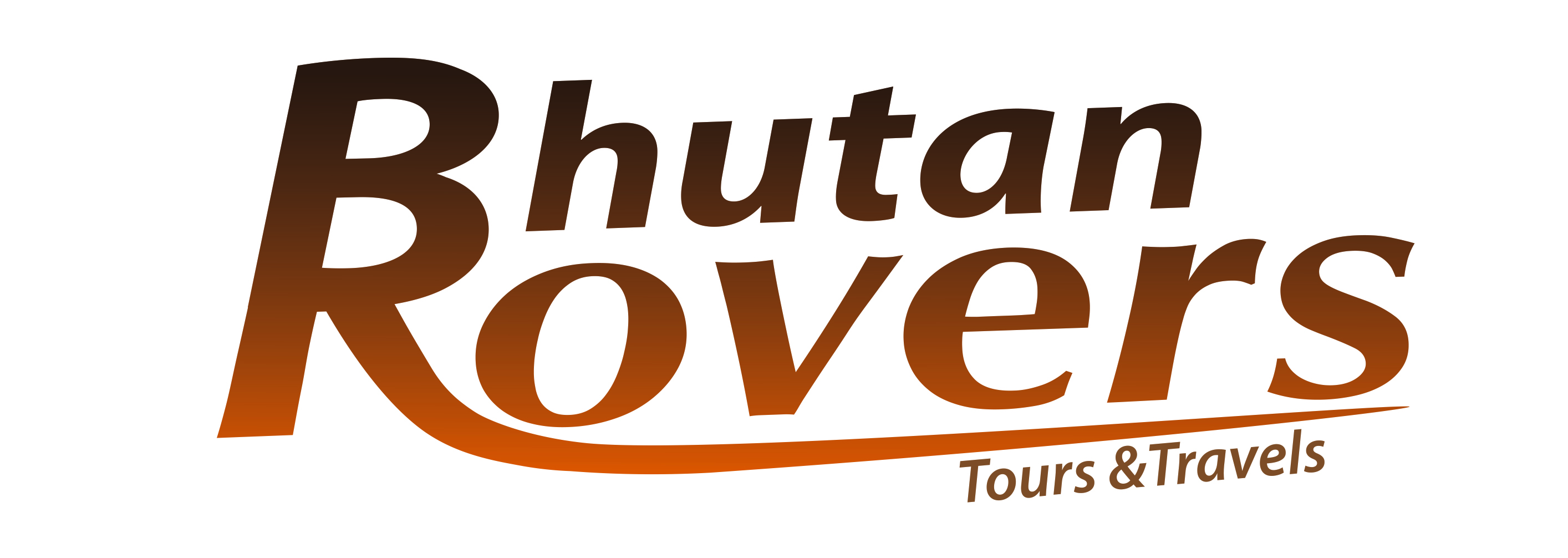
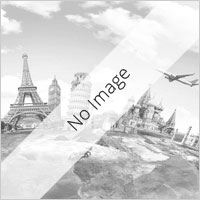 15D/14N
15D/14N
 15D/14N
15D/14N
 13D/12N
13D/12N
Guwahati - Shillong - Tawang - Cherrapunji - Bomdila - Golaghat - Mandla
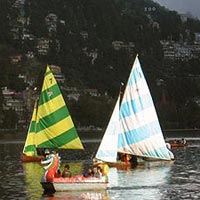 13D/12N
13D/12N
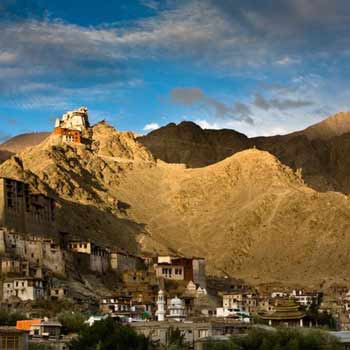 13D/12N
13D/12N
12 Night / 13 Days Haven Himachal Family..
Shimla - Sangla - Kalpa - Kinnaur - Manali - Dharamshala - Dalhousie - Amritsar
 13D/12N
13D/12N
 13D/12N
13D/12N
Shimla - Kulu - Manali - Dharmshala - Da..
Shimla - Manali - Dalhousie - Amritsar - Dharamshala - Kulu
 13D/12N
13D/12N
Rajasthan 12 Nights 13 Days Tour
Bikaner - Jaisalmer - Jodhpur - Mount Abu - Chittorgarh - Pushkar - Jaipur - Udaipur
 13D/12N
13D/12N
Agra - Jaipur - Jodhpur - Jaisalmer - New Delhi - Udaipur
 13D/12N
13D/12N
Golden Triangle Tour with Khajuraho
New Delhi - Jaipur - Fatehpur Sikri - Agra - Jhansi - Orchha - Khajuraho - Varanasi
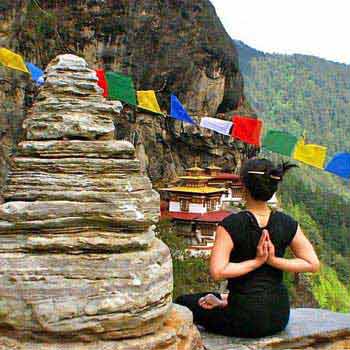 13D/12N
13D/12N
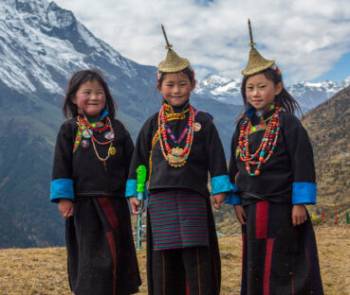 5D/4N
5D/4N
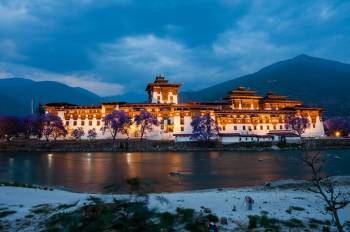 7D/6N
7D/6N
6 Nights/ 7 Days - Bhutan Happiness Tour
Punakha - Bumthang - Paro - Thimphu - Phobjik
 20D/19N
20D/19N
20 Days Land Package Country Tour BHUTAN..
Punakha - Paro - Phuntsholing - Bagdogra - Bumthang - Mongar - Trashigang - Trongsa..
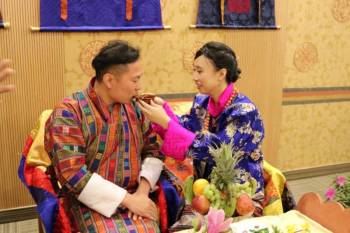 4D/3N
4D/3N
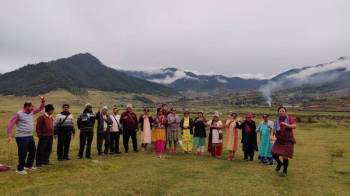 6D/5N
6D/5N
 7D/6N
7D/6N
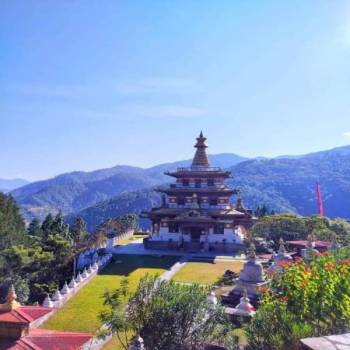 7D/6N
7D/6N
Rimso 7 Days 6 Nights Bountiful Tour fo..
Thimphu - Punakha - Paro - Phuentsholing
 7D/6N
7D/6N
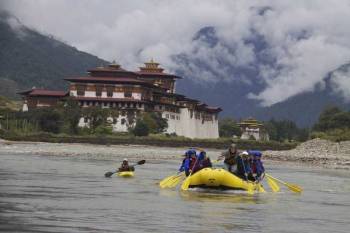 7D/6N
7D/6N